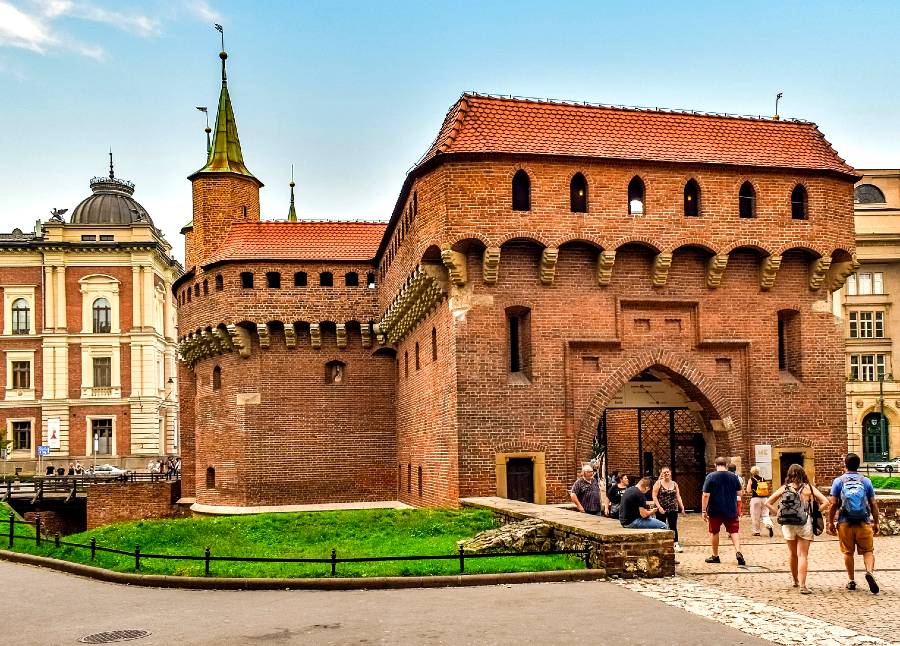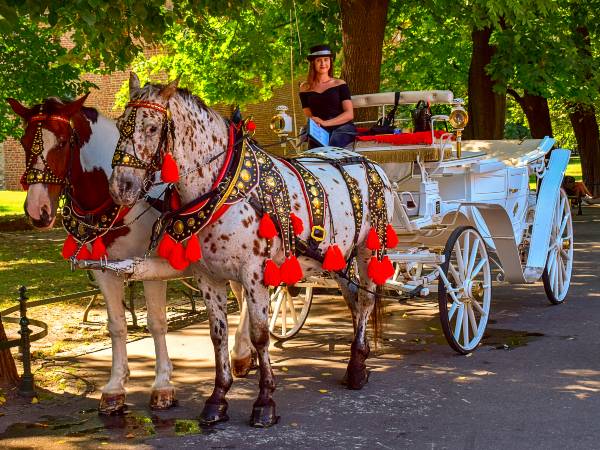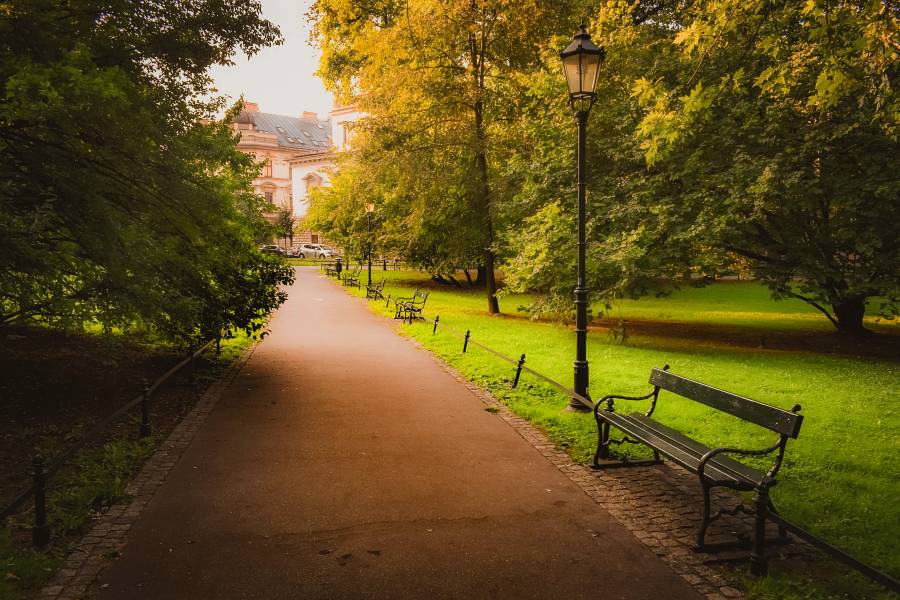Planty Park offers an idyllic setting for observing the vibrant daily life of Krakow. It’s a favored destination among local families, young couples, and groups of friends, who relish leisurely strolls along its picturesque tree-lined avenues.
Embarking on a morning visit allows you to savor the delightful ambiance of the park. As you meander through the pathways, you’ll encounter charming kiosks vending a variety of delectable treats, such as the traditional obwarzanek and mouthwatering sweets. The fragrant air is accompanied by the sight of manicured gardens, adding to the park’s tranquil allure.
Planty Park holds a special place in the hearts of the locals, and spending time there will reveal why it’s held in such high regard. So, indulge in a leisurely stroll, immerse yourself in the serene surroundings, and experience firsthand the profound affection the city has for this enchanting green oasis.
Planty Park: A Green Belt on the Site of the Ancient City Walls
The Old Town of Krakow was once enclosed within majestic and mighty defensive walls. Dating back to the 13th century, these city walls formed a complex network of fortifications, towers, and gates, surrounded by a deep moat on the outer side. However, as the 1800s approached, the medieval city walls fell into disuse. Krakow had expanded far beyond the confines of these walls, and the area around them had turned into a neglected, unsanitary, and dilapidated space.


During that time, Krakow was under Austrian influence and Emperor Franz I of Austria-Hungary ordered the dismantling of the old fortifications, filling the moat with soil and creating a garden in its place. Unfortunately, this short-sighted demolition erased many traces of the marvelous medieval fortifications. Nevertheless, thanks to the efforts of Professor Feliks Radwański from Jagiellonian University, the Senate of the Free City of Cracow was convinced to preserve a part of the ancient fortifications.
As a result, we can still admire the Krakow Barbican and St. Florian’s Gate today, which were once integral parts of the inner city walls.
Things to See and Do in Planty Park
Planty Park in Krakow is a delightful 4 km long green belt that encircles the city, featuring a chain of dozens of smaller gardens, each designed in a different style. These gardens are interconnected by scenic walkways and lawns adorned with fountains and statues.
Embarking on a leisurely walk along Planty Park will lead you to discover numerous historic buildings in Krakow. Your journey can commence at the Barbican, an imposing fortress dating back to 1499. Nearby, don’t miss the opportunity to visit the Florianska Gate, the ancient main entrance to the city from the 13th century, which marks the beginning of the Royal Route meandering through the old town.
As you stroll along the walkways, you’ll encounter street performers, charming stalls, and kiosks selling street food, sweets, and the inevitable obwarzanek, a typical donut-shaped bread.
Follow Szewska Street as it runs through the park and leads you directly to the Main Market Square, where a plethora of eateries and cafes await. Just a few hundred meters further, you’ll be enthralled by the historic Jagiellonian University. Be sure to visit the remarkable Collegium Maius, the oldest building of the University, once attended by Copernicus.

Continuing along Planty Park, you’ll pass by Franciszkańska Street, which is situated opposite the Philharmonic. Here, you’ll find the Bishop’s Palace and the Basilica of Saint Francis of Assisi.
As you walk along the old wall of the Archaeological Museum, you’ll eventually arrive at the foot of Wawel Hill (famous for the Wawel Castle and the Wawel Cathedral), and from there, you can stroll along the bank of the Vistula River. Once you’ve explored the most famous tourist spots, you can venture to Grodzka Street, which will lead you back to the Main Market Square. On the opposite side of the street, you’ll find the continuation of Planty Park, although there isn’t much to see on this particular stretch.
On your return journey to the Barbican, make sure to visit the beautiful Juliusz Słowacki Theater, a Baroque theater-opera house built in the late 1800s and listed as a UNESCO World Heritage Site together with the old town of Krakow. Behind the theater, take a moment to admire the breathtaking medieval Church of the Holy Cross, a Gothic jewel dating from the early 14th century.
How to Visit Planty Park
You can visit Planty Park for free. To visit the various museums and attractions you will encounter along the way (such as the Barbican, the City Walls, the Archaeological Museum with its beautiful gardens, etc.) you will need to purchase a ticket for each attraction. With the City Pass Krakow Card you can visit them for free.
A great way to visit Planty Park is by bicycle. You can rent a bike and explore the city on your own or you can join one bike tour that allow you to see the most famous attractions of Krakow city center, including Planty Park.
There are also excellent guided walking tours, and segway tours are also very popular. Don’t miss the Krakow Night Tour: an evening walk to discover the legends of Krakow and ancient stories of ghosts, vampires and alchemists.
For those traveling on a budget, there are also good free walking tours.
Things to see and do around Planty Park
Planty Park is the main gateway to the wonderful Krakow’s Old Town and from here you can easily reach all the main attractions of the city. Check out our must-read list of the Best Things to Do and See in Krakow.
Planning your trip to Krakow? Then these will come in handy: